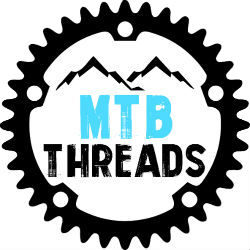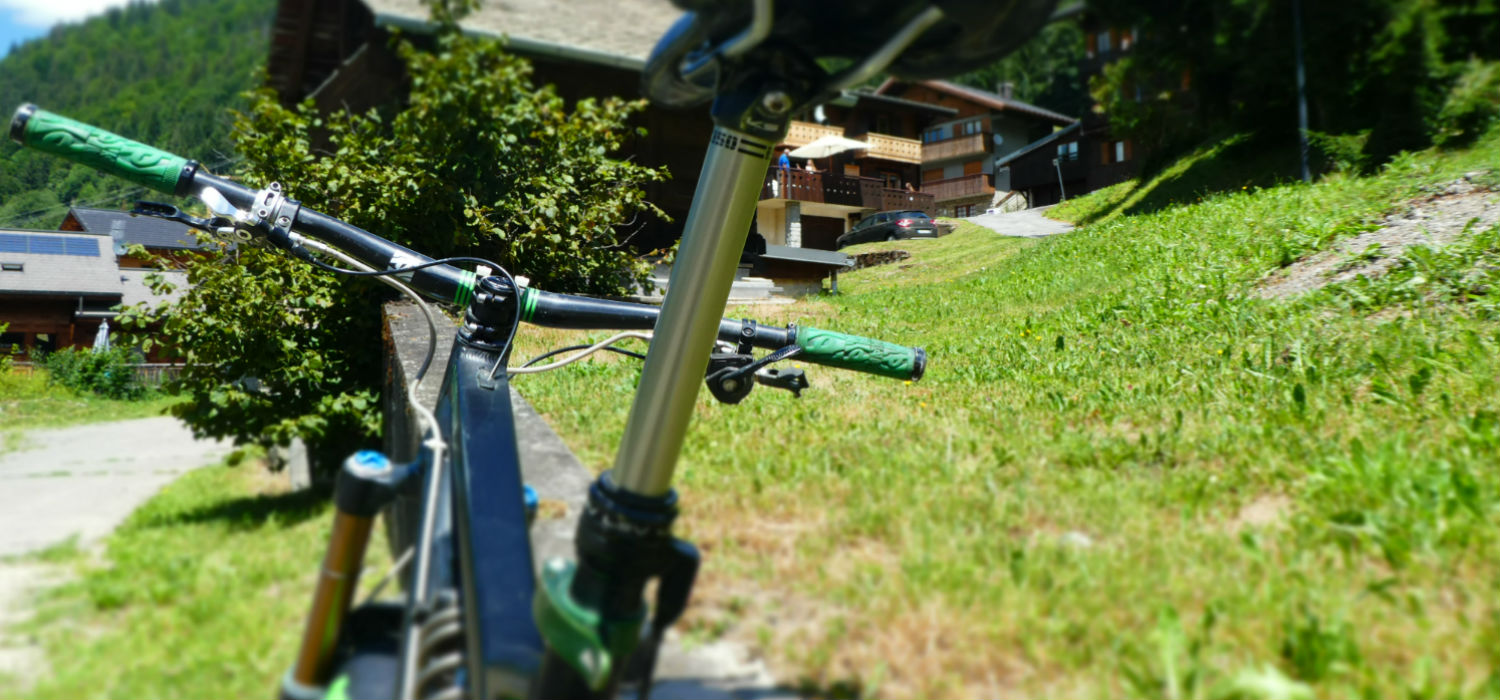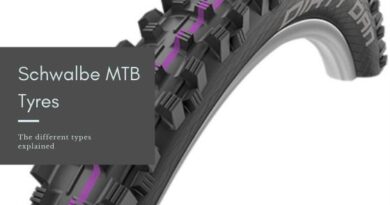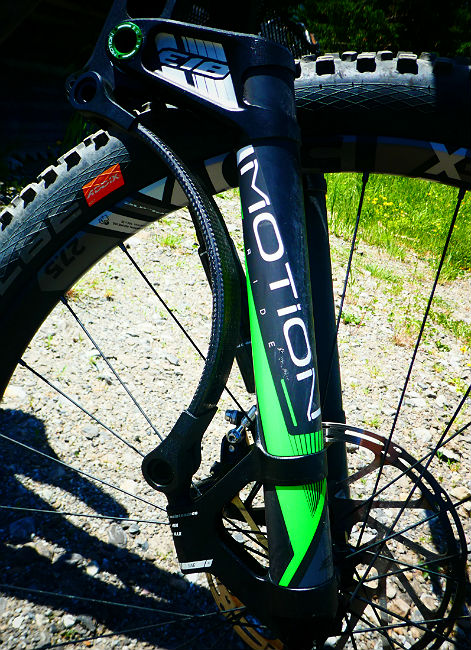How to Choose a Mountain Bike: What you need to know
If you are wondering how to choose a mountain bike, you are probably a bit blown away by choice. If you have looked in to it, you will have found that there are a lot of questions to answer. Well, I’m here to help with the definitive guide on how to choose a mountain bike.
New or Used?
You need to have a starting point and unfortunately for most people it is their budget. Therefore, you need to decide whether to buy new or used.
Some used bikes are really well looked after, as lots of mountain bikers are obsessive about bike maintenance and cleaning. However, some are not. If you go to look at a used bike and don’t feel comfortable in what to look out for, try to take a friend who does. Remember, if it looks too good to be true, it probably is. You can also visit your local bike shop to for extra information on how to choose a mountain bike.
Buying new is great! You will have a completely unmolested bike that is perfect from the factory. It will also have a manufacturers warranty, if you have any problems with it.
The only downside of a brand new bike, is that if your budget is really strict, you probably won’t get as good specification buying used. Therefore, you need to weigh up the pros and cons of the bikes that you are looking at.
But before you make a decision, there are a few more things to consider….
What type of terrain do you ride?
Answering this question will narrow down your criteria, and help you choose a mountain bike. This is because, you will need the right bike for the job. The terrain you ride will determine the amount of suspension your new bike should have. Suspension is important, because riding over rocks, roots, jumps and other features is very bumpy. And those bumps go through your bike and in to you. If you can afford a bike with suspension, the suspension will absorb a lot of those bumps. This means you won’t suffer fatigue as quickly
How much suspension can I have?
Rigid
A rigid bike has no suspension at all. You won’t find many rigid mountain bikes, but they are easy to maintain and are at the lower end of the price scale. You will notice that Fat Bikes are rigid, but their big squishy tyres with low air pressure, will absorb a lot of the bumps.
Hardtail
A hardtail bike is a bike that just has front suspension. The front forks will have either air or springs inside them to absorb the bumps as you ride over them. They are more expensive than rigid bikes, but cheaper than full suspension bikes. Some bikes have the functionality of locking the forks, so they don’t move up and down. This makes pedaling up hill more efficient, as you won’t be wasting energy bouncing up and down.
A good hardtail can handle most trails, and their price makes them a good buy over a full suspension bike for most people. This is because they are more simple and have less to go wrong with them.
A hardtail is the ideal bike if you are not doing anything too serious. But if you can afford it, or want to ride something a bit more challenging, you will need a full suspension bike. However, if you are a beginner a hardtail bike is the best option.
Click here to see Hardtail vs Full suspension
Click here to learn hoe to buy a hardtail
Full Suspension
This is a bike with front and rear suspension, meaning that the bike absorbs the shock even more. A full suspension bike is a lot more comfortable for the rider. The other advantage is that you will get more traction on a full suspension bike, which will allow you to ride more challenging terrain and it will be more forgiving.
Depending on the amount of travel (how much the suspension goes up and down), a full suspension bike is good for trail centres and rides through the alps, including most downhill trails.
=>Click here to see discounted Trek mountain bikes on sale<=
Which Type of Bike?
There are a few types of mountain bike. They are all designed around different types of riding and budgets.
Cross Country
Cross country bikes are super lightweight, and are designed primarily for riding uphill as fast as possible. Most cross-country bikes are hardtails, to make sure climbing more efficient. Their suspension travel is usually between 80mm and 100mm. Meaning you will be shaken up a bit on the rough stuff, but you will fly up the hills.
Trail Bikes
These are probably the most common type of mountain bike, because trail bikes are very versatile. They have a good balance of being able to ride up and down hills effectively. These bikes are ideal for trail centres and are great fun all round bikes. Their suspension travel is typically between 120mm and 140mm, meaning they will soak up a lot of the bumps you would expect at a trail centre.
=> Click here to see discounted Specialized bike on sale<=
Fat Bikes
Fat bikes have huge wheels with big squishy tyres. As I said before, Fat bikes don’t have suspension, as the bumps are soaked up by the tyres. These are originally designed to allow the rider to ride on snow or sand, due to the large contact area of the tyre. But they are also used a bit more generically now, as they are great fun and give the rider confidence, as they have excellent grip.
Enduro Bikes
Sometimes referred to as “All Mountain” bikes, Enduro bikes are a bit like trail bikes, but much tougher. This is what I ride, because they are ideal for riding around the French Alps (where I live). Enduro bikes, allow you to ride up the mountain and tackle the technical descents associated with them. Typically, the suspension travel is 160mm to 170mm (mine has 180mm), front and back. Unless you have a 29″ wheel, where you would have around 155mm travel.
Enduro bikes are the all round bikes that can take you anywhere.
Downhill
Just as the name suggests, these bikes are made to get you down a hill or mountain as fast as possible. Downhill bikes are big bruisers with suspension travel ranging from 170mm to over 200mm. The way these bikes absorb bumps is pretty mind boggling. Downhill riders will be hitting jumps, rock gardens, berms (banked corners) and other man-made features. It is pretty hardcore stuff, therefore riders will wear full face helmets and body armour.
Buy one of these if you have access to chairlifts or uplifts, as they are heavy and geared to make you accelerate downhill. They are very difficult to pedal uphill, therefore you will see a lot of downhillers pushing their bikes up.
Wheel Size

There are three main wheel sizes for adult bikes:
26″
26″ wheels seem to be being phased out now, in favour of larger wheel sizes. This size was found on all mountain bikes in the recent past. The advantage of 26″ wheels is that they are a great in tight corners, as they make it easier to change direction easily. However, 26″ wheels don’t roll over rocks and roots as well as larger wheels. My current bike has 26″ wheels, and it works fine though.
27.5″
Currently 27.5″ is the most common wheel size (also known as 650b), they are the middle ground between 26″ and 29″. 27.5″ wheels offer better maneuverability than a 29″ wheel, while being able to roll better than a 26″ on technical terrain.
You will also find 25.5″+ wheels too. These are a slightly wider version of the 27.5″ wheel, making your ride a bit more comfortable. They also have less rolling resistance.
29″
29″ is the most recent wheel size manufacturers are selling their bikes with. The increased diameter helps the tyre roll over rough terrain easier. However, bikes with 29″ wheels are harder to change direction quickly. If you watch any of the downhill world cup races, you will notice that many of the bikes use this wheel size. This is because the courses don’t have that many tight corners, but have lots of technical sections that need to be “straight lined”.
While we are the subject of wheels, your tyre choice is also worth considering. But that is a whole new article in itself, that I haven’t got round to writing yet. However, you may want to make sure your new bike is “tubeless ready”. Click here to find out about the advantages and disadvantages of tyres with inner tubes and ones without.
Bike Size
You really need to get the size of your bike right. The wrong size bike will leave you uncomfortable, and you without the confidence to ride to the best of your ability. Therefore, you need to know how to choose a correct mountain bike size.
Bikes are sized S, M, L and XL. The sizes of bikes are very similar across most manufacturers and they all have sizing charts. Your new bike’s size is determined by your height, and the best way to see if it is correct, is by sitting on one. Even better than that, is to have a test ride. Look out for test rides or demo bikes at trail centres to try before you buy.
Frame Material

The your new bike’s frame material will have a huge impact on how much you pay for it. It also has an impact on its weight, strength, stiffness and quality.
There are a few options for frame material, but I will keep it down to the current main two.
Aluminium
A lightweight and strong metal. Aluminium is a great material that can handle tough conditions and is light enough to help you out on climbs.
Carbon Fibre
Even lighter than aluminium, carbon fibre is a stiff material that makes a bike very responsive. Other than the high price, the disadvantage of carbon fibre, is that it is brittle and can crack with a big enough impact. Carbon frames are now built stronger than they need to be. However, if you are looking to buy an older used carbon bike, give the frame a thorough check for damage. If you see any cracks, walk away.
Brakes

Brakes are VERY important, they stop you hitting misplaced trees and other hard things. There are a couple of different types of breaks available.
V-Brakes
If you are just planning on riding on the road, or a canal path, V-brakes are sufficient. They work by a cable pulling the brake pads on to the wheel when you pull the lever. If you are even semi-serious about mountain biking, I wouldn’t bother with these. Brakes are not something you want to save money on.
Disc Brakes
Disc brakes have great stopping power. When you pull the brake lever, the pads grab hold of a brake disc mounted on the wheel. There are two ways that disc brakes are operated:
Cable
– Using a similar system to V-brakes, a cable applies the brake pads to the disc. The issue with these, is that as the pads wear out, you need to manually adjust the brakes to make sure they are effective.
Hydraulic
– Hydraulic brakes work in the same way as a car’s brakes. Pressure from hydraulic fluid applies the brake pads to the disc. This system gives strong breaking power and it is more progressive. This means you can always apply the correct amount of breaking force required. Hydraulic brakes also require less effort on your braking fingers, making it safer, as your hands don’t get fatigued as quickly.
Gears

Where you ride will make a difference to the gears you have on your bike. If you ride up steep hills a lot, you will need more gears. You change gears with your thumb on shifters on your handle bars. Bikes usually come with two sets of gears. One on the crank, usually consisting of two or three gears and one set on the rear wheel, made up of 9, 10 or 11 gears.
My bike only has one gear on the crank, this is because I need to keep my bike as simple as possible. Doing this, means I only have one gear shifter, and I have a chain guide to stop the chain coming off. This happens a lot on the type of terrain I ride. In the Alps, you need a bike that is as tough and as simple as possible.
Now you know how to choose a mountain bike
I could go in to a lot more detail, but it would be boring for everyone (even me). However, this should be enough information on how to choose a mountain bike, to help you make a decision.
So you need to consider:
- Your budget
- Where you ride
- What type of riding you want to do
- Wheel size
- Bike size
- Frame material
- How desperate you are to stop
- How many gears you want
However, your budget is going to contribute to all of these items, and you will probably have to compromise on something (unless you are loaded).
Is there anything else you want to know before you take the plunge? If you need any more help on how to choose a mountain bike, please leave your questions and comments in the comments section below, and I will get back to you as soon as possible.









Pingback: How To Get Your Partner In To Mountain Biking |
Pingback: 2020 Mondraker F-Podium Carbon: What you need to know -
Pingback: 2019 Vitus Mountain Bikes: What You Need To Know -
Pingback: Popular Mountain Bike Brands - My overview of the most popular brands
Pingback: What is the best Mountain Bike to buy? - Learn how to choose
Pingback: Mountain Bike Suspension: The Essential Comprehensive Guide -
Pingback: YT Industries 2019 Bikes: A rundown of the range -
Pingback: How to Choose a MTB - eBikeAI